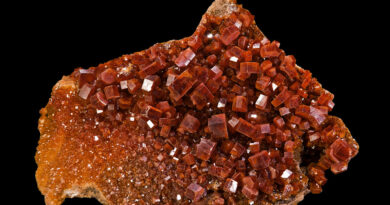New process extracts high purity scandium oxide
Researchers at Rio Tinto have developed a new process to extract high purity scandium oxide, a critical mineral, from by-products generated in the production of titanium dioxide at the RTFT metallurgical operation in Sorel-Tracy, Quebec. They are now producing high-quality scandium oxide that meets market specifications as part of an ongoing pilot, as well as trialling the production of a scandium aluminium master alloy.
This breakthrough has the potential to enhance the scandium oxide market by delivering a secure supply source from this established operation, creating value from what was previously waste.
Scandium is a silvery-white, rare earth metallic element. The United States, Canada, Australia and the European Union have all listed it as a critical mineral in recent years.
Scandium oxide is used to improve the performance of solid oxide fuel cells, which are used as a power source for buildings, as well as in niche products such as lasers and lighting for stadiums or studios.
Scandium is also used to produce high-performance aluminum alloys. Small additions of scandium into aluminum alloys increase strength, heat and corrosion resistance, and welding properties substantially.
Since the 1980s, Scandium-Aluminium alloys have been used for structural purposes to provide weight, maneuverability and range advantages to military aircraft. Today, Aluminium-Scandium-Magnesium alloy powder is even used in 3D printing.
The RTFT metallurgical operation in Sorel-Tracy processes ilmenite ore to produce titanium dioxide feedstocks. Researchers in the RTFT Research & Development Centre have developed a new process to extract high purity scandium oxide from by-products generated in the production of titanium dioxide feedstocks.
Since the second half of 2019, a lab has been producing high quality scandium oxide that meets market specifications and the process is now being used at a larger scale in a pilot plant.
Rio Tinto is also trialling the production of small quantities of high-performance aluminium-scandium master alloy using the scandium oxide produced by RTFT with its world class aluminium business, also based in Quebec.
This disruptive process presents low production costs and requires minimal capital investment:
· No direct mining costs
· Recovery of scandium oxide directly from by-products from the existing metallurgical plant
· Operating independently from existing assets with no impact on the main process flow
Rio Tinto is seeing strong interest in the market and is now assessing the potential to progress to industrial scale scandium oxide production. The potential timing, scale and investment in industrial production are being considered.
“This breakthrough on scandium is a great example of how we are looking at our operations across the world with fresh eyes to see how we can extract value from by-product streams. Finding a way to extract a new product not only delivers more value from our orebodies, it helps to reduce waste. It’s a key part of operating in a more responsible way and providing the essential materials our world needs for a sustainable future,” says Jean-Sébastien Jacques, CEO.




